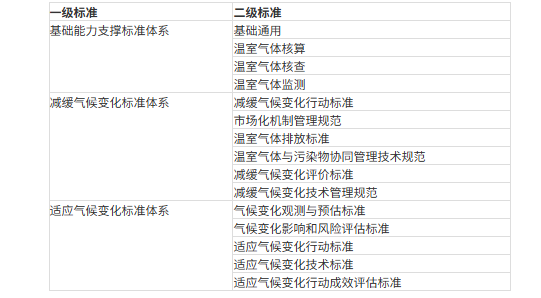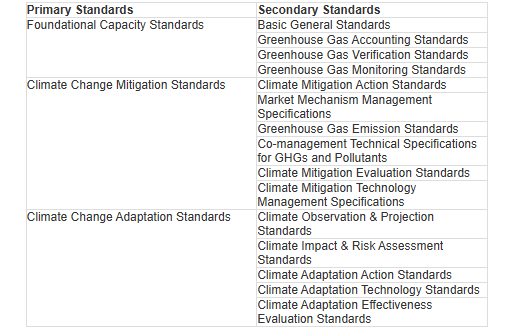
本期要闻/ Highlights of the Month
生态环境部、国家疾病预防控制局:有毒有害水污染物名录(第二批)
Ministry of Ecology and Environment, National Administration of Disease Control and Prevention: List of Toxic and Hazardous Water Pollutants (Second Batch)
为指导各地加强有毒有害水污染物监管,强化源头防控,实施调查监测,防范水环境风险,2019年生态环境部和国家卫生健康委联合发布了《有毒有害水污染物名录(第一批)》,收录了10种(类)有毒有害水污染物。
日前,基于《优先控制化学品名录(第二批)》收录的18种(类)物质,综合考虑物质的固有危害、水环境赋存能力、管控情况等因素,筛选出11种(类)物质纳入《有毒有害水污染物名录(第二批)》。其中包括铊及铊化合物、氰化物(易释放氰化物)、五氯酚及五氯酚钠、苯、甲苯、硝基苯类物质(2,4-二硝基甲苯)、苯胺类物质(邻甲苯胺)、1,1-二氯乙烯、六氯丁二烯、多环芳烃类物质和二噁英类物质。
此次列入名录的化学物质包含有机物9种(类),重金属及无机化合物2类,具有持久性和累积性,对水生生物具有2类以上的急性毒性和慢性毒性,通过水环境接触可对人体产生2类以上的致癌、致突变或生殖毒性效应以及其他高危害特性。
To guide local governments in strengthening the supervision of toxic and hazardous water pollutants, enhancing source prevention and control, implementing investigation and monitoring, and preventing water environmental risks, the Ministry of Ecology and Environment and the National Health Commission jointly issued the List of Toxic and Hazardous Water Pollutants (First Batch) in 2019, which included 10 types (categories) of toxic and hazardous water pollutants.
Recently, based on the 18 types (categories) of substances listed in the Priority Controlled Chemicals List (Second Batch), and after comprehensive consideration of factors such as inherent hazards, water environmental persistence, and regulatory status, 11 types (categories) of substances have been selected for inclusion in the List of Toxic and Hazardous Water Pollutants (Second Batch). These include thallium and thallium compounds, cyanides (readily releasable cyanides), pentachlorophenol and sodium pentachloro phenate, benzene, toluene, nitrobenzene compounds (2,4-dinitrotoluene), aniline compounds (o-toluidine), 1,1-dichloroethylene, hexachlorobutadiene, polycyclic aromatic hydrocarbons, and dioxin-like compounds.
The chemical substances included in this list comprise 9 types (categories) of organic compounds and 2 categories of heavy metals and inorganic compounds. They exhibit persistence and bioaccumulation potential, demonstrate acute and chronic toxicity to aquatic organisms (classified as Category 2 or higher), and can induce carcinogenic, mutagenic, or reproductive toxic effects (Category 2 or higher) in humans through water exposure, along with other high-hazard characteristics.
最新国家法律法规/ National Updates
Ministry of Ecology and Environment and 14 Other Departments: National Climate Change Standard System Construction Plan
为持续实施积极应对气候变化战略,提升应对气候变化管理工作的规范化、制度化、体系化水平,为我国应对气候变化工作提供坚实的技术支撑,《国家应对气候变化标准体系建设方案》从基础能力、减缓气候变化和适应气候变化3方面搭建了应对气候变化标准体系建设框架,进一步细分为15类二级标准和45类三级标准,并细化了每个二级子体系的定位作用与标准制修订工作的重点任务。
主要标准体系如下:

To continuously implement the national strategy for actively addressing climate change, enhance the standardization, institutionalization, and systematization of climate change management, and provide solid technical support for China’s climate change efforts, the National Climate Change Standard System Construction Plan establishes a framework for the climate change standard system across three dimensions: foundational capacity, climate change mitigation, and climate change adaptation. This framework is further subdivided into 15 secondary standards and 45 tertiary standards, with detailed definitions of the roles of each secondary subsystem and key tasks for standard development and revision
Key Standard Systems Include:

最新国家标准/ Latest National Standards
GB 2894-2025 Safety Colors and Safety Signs
GB 17051-2025 Hygienic Specification for Facilities of Secondary Water Supply
立法草案/ Policy Initiatives & Developments
Ministry of Emergency Management: Safety Code for Dipping Painting (Draft for Comments)
本文件规定了浸漆涂装安全生产的总体要求、浸涂设备、电气及自动控制、通风系统与废气处理、涂料贮存和输送、操作与维护安全管理等安全技术要求,并描述了证实方法。适用于使用易燃或可燃液体涂料的工艺及其设备设计、制造、安装、验收和使用。
本文件不适用于使用液体涂料的电泳涂漆。
This document specifies the general safety requirements for dipping painting operations, including dipping coating equipment safety standards, electrical & automatic control systems, ventilation systems and exhaust gas treatment, coating storage and transportation protocols, and operation and maintenance safety management. It also defines verification methods for compliance.
The standard applies to processes and equipment (design/manufacturing/installation/acceptance/operation) using flammable or combustible liquid coatings, but excludes electrophoretic painting with liquid coatings.
应急管理部:关于公开征求《个体防护装备术语(征求意见稿)》等2项推荐性国家标准意见的函
Ministry of Emergency Management: Letter on Public Solicitation of Comments for Two Recommended National Standards Including ” Personal Protective Equipment Terminology (Draft for Comments)”
征求意见的标准中包含《个体防护装备术语(征求意见稿)》,该标准首次发布为 GB/T 12903-1991,2008年第一次修订;本次为第二次修订,整合了GB/T 30042—2013《个体防护装备 眼面部防护 名词术语》。适用于个体防护装备标准的制修订、技术文件编制、专业手册及教材书刊等的编写和翻译。本文件不适用于医疗救护用个人防护装备。
The standards open for comments include ” Personal Protective Equipment Terminology (Draft for Comments)”, which was first published as GB/T 12903-1991 and underwent its first revision in 2008. This marks the second revision, integrating GB/T 30042-2013 “Personal Protective Equipment—Eye and Face Protection—Vocabulary”. The standard applies to the formulation and revision of personal protective equipment standards, the preparation of technical documents, and the compilation and translation of professional manuals and textbooks. This document does not apply to personal protective equipment for medical rescue purposes.
Ministry of Emergency Management: “Safety Code for Special Operations in Industrial and Trade Enterprises” (Draft for Comments)
应急管理部就《工贸企业特殊作业安全规范》向公众征求意见,本文件规定了工贸企业安全风险较高的特殊作业安全管理和技术要求,适用于冶金、有色、建材、机械、轻工、纺织、烟草、商贸等行业的企业。
本文件所定义的特殊作业包括高处作业、有限空间作业、临时用电作业、盲板抽堵作业、动火作业、吊装作业、带煤气作业、清库作业、熏蒸作业、热氨融霜作业等10类。
The Ministry of Emergency Management is soliciting public comments on the “Safety Code for Special Operations in Industrial and Trade Enterprises”. This document specifies safety management and technical requirements for high-risk special operations in industrial and trade enterprises, and applies to enterprises in industries including metallurgy, non-ferrous metals, building materials, machinery, light industry, textiles, tobacco, and commerce.
The special operations defined in this document include 10 categories: work at height, confined space operations, temporary electrical work, blind plate installation/removal, hot work, lifting operations, gas-related operations, silo cleaning, fumigation operations, and hot ammonia defrosting operations.
Ministry of Ecology and Environment: Classification of Radiation Devices (Revised Draft for Comments)
文件对2017年发布施行的《射线装置分类》进行了修订,将Ⅲ类射线装置细分为Ⅲ-A类和Ⅲ-B类,以更精准地匹配不同射线装置的实际风险等级与其相应的安全管理要求。
非医用射线装置方面,Ⅰ类射线装置新增中子产额大于等于 1E+12n/s的中子源装置,Ⅱ类射线装置的中子发生器修改为中子产额小于 1E+12n/s 的中子源装置。文件同时还修改了部分装置的定义。
The document revises the 2017 “Classification of Radiation Devices”, subdividing Class III devices into III-A and III-B categories to more precisely align with the actual risk levels and corresponding safety management requirements of different radiation devices.
For non-medical radiation devices, Class I devices now include neutron source installations with neutron yields ≥1E+12n/s, while Class II devices modify the definition of neutron generators to those with neutron yields <1E+12n/s. The document also updates definitions for certain devices.
财政部:《企业可持续披露准则——基本准则(试行)》应用指南(征求意见稿)
Ministry of Finance: Application Guidelines for “Corporate Sustainability Disclosure Standards – Basic Standards (Trial)”
2024年11月20日,财政部等9部门联合印发《基本准则》,拉开了国家统一的可持续披露准则体系建设的序幕。为便于各有关方面准确理解和把握《基本准则》,研究起草了《应用指南》征求意见稿,针对前期《基本准则》研究制定过程中各方较为关注的重点难点问题以及需要进一步解释、细化的内容,进行系统梳理和详细说明,以增强《基本准则》的指导性和可操作性。
征求意见稿由9个问题组成,分别是价值链、报告主体、信息的关联、可持续信息的基本使用者、重要性评估、相称性原则、可持续风险和机遇的当期和预期财务影响、企业的战略和业务模式对可持续风险的韧性以及可持续影响信息披露。
On November 20, 2024, the Ministry of Finance and eight other departments jointly issued the “Basic Standards”, marking the beginning of the construction of a nationally unified sustainability disclosure standards system. To facilitate accurate understanding and implementation of the “Basic Standards”, the draft “Application Guidelines” has been formulated. It systematically addresses key and challenging issues raised during the development of the “Basic Standards”, as well as content requiring further clarification and elaboration, thereby enhancing the guidance and operability of the “Basic Standards”.
The draft for comments consists of nine key sections: value chain, reporting entity, information linkage, primary users of sustainability information, materiality assessment, proportionality principle, current and anticipated financial impacts of sustainability risks and opportunities, resilience of corporate strategy and business models to sustainability risks, and disclosure of sustainability impact information.
国家市场监督管理总局:特种设备风险防控知识图谱构建与辅助决策技术框架指南(草案)
State Administration for Market Regulation: Technical Framework Guidelines for Special Equipment Risk Prevention Knowledge Graph Construction and Decision Support (Draft)
本标准通过融合设备基础数据、法规标准、检验报告、监察文书等文本数据,搭建检验、监管与应急知识图谱,实现智能辅助决策问答。规定了特种设备安全风险防控知识图谱与辅助决策的术语和定义,给出了风险防控知识图谱与辅助决策的整体框架及范畴界定,提供了知识图谱构建与更新、辅助决策技术设计与系统开发、基于知识图谱的风险防控知识服务应用的框架指南。
适用于特种设备安全风险防控知识图谱构建与辅助决策技术系统开发。
This standard integrates equipment basic data, regulatory standards, inspection reports, and supervisory documents to establish inspection, supervision, and emergency knowledge graphs, enabling intelligent decision support. It defines terms and concepts for special equipment safety risk prevention knowledge graphs and decision support, outlines the overall framework and scope, and provides guidelines for knowledge graph construction and updates, decision support technology design and system development, and knowledge graph-based risk prevention applications.
Applicable to the development of special equipment safety risk prevention knowledge graph construction and decision support technology systems.
应急管理部:危险化学品重大危险源企业双重预防机制建设应用规范(征求意见稿)
Ministry of Emergency Management: Application Specifications for Dual Prevention Mechanism Construction in Major Hazard Installations of Hazardous Chemicals Enterprises (Draft for Comments)
本文件规定了危险化学品生产装置、储存设施或场所安全风险分级管控和隐患排查治理工作的基本要求、建设要求、应用要求等内容。适用于涉及重大危险源的危险化学品生产企业、经营企业、使用危险化学品从事生产的化工企业(以下简称企业),其他化工企业可参照执行。
本文件附有安全风险分析对象确定和单元划分方法、典型事故类别及常见能量载体、事故后果等级说明及示例、隐患排查任务清单、危险化学品重大危险源安全包保责任人隐患排查任务、岗位隐患排查周期、运行效果评估模型等七个附录。
This document specifies the basic requirements, construction requirements, and application requirements for safety risk classification control and hidden danger investigation and governance in hazardous chemical production facilities, storage facilities, or sites. It applies to hazardous chemical production enterprises, trading enterprises, and chemical enterprises using hazardous chemicals for production (hereinafter referred to as “enterprises”) involving major hazard installations, while other chemical enterprises may refer to it for implementation.
The document includes seven appendices: methods for determining safety risk analysis objects and unit division, typical accident categories and common energy carriers, descriptions and examples of accident consequence levels, hidden danger investigation task lists, hidden danger investigation tasks for safety responsibility personnel of major hazard installations in hazardous chemicals, hidden danger investigation cycles for positions, and operational effectiveness evaluation models.
最新地方性法规/ Regional Updates
Beijing Municipality: Beijing Municipal Guidelines for Safety Management of Hazardous Chemicals Usage in Industrial and Trading Enterprises
指南》适用于全市范围内冶金、有色、建材、机械、轻工、纺织、烟草、商贸等行业生产、加工过程及其配套辅助系统中使用危险化学品的企业。
明确了危险化学品采购、装卸、储存、使用、应急全流程管理的要求,并明确了涉氨、涉氢、涉环氧乙烷、涉氯等重点涉危场所的安全要求。
The Guidelines apply to enterprises in metallurgy, non-ferrous metals, building materials, machinery, light industry, textiles, tobacco, commerce and other industries that use hazardous chemicals in production, processing processes and their supporting auxiliary systems within the city.
The document specifies requirements for whole-process management of hazardous chemicals including procurement, loading/unloading, storage, usage and emergency response. It particularly clarifies safety requirements for key hazardous facilities involving ammonia, hydrogen, ethylene oxide, chlorine and other major hazardous substances.
江苏省:江苏省工业、建筑业、服务业、生活和农业用水定额(2025年修订)
Jiangsu Province: Jiangsu Province Water Quota Standards for Industry, Construction, Service Sectors, Domestic Use and Agriculture (2025 Revision)
通知在2019年版本基础上进行全面修订,并吸收了2024年试行的农业用水定额成果,实现了对江苏省国民经济行业门类的全覆盖,涵盖工业、建筑业、服务业、生活和农业五大领域。具体包括290个行业中类、423个行业小类、731项产品及2914个用水定额值。
《定额》在国家定额或者省级定额的基础上进一步收紧标准,对170项产品补充制定了先进值或领跑值,狠抓大户水效,进一步提高全省用水效率。
The notice comprehensively revises the 2019 version and incorporates the trial results of agricultural water quotas implemented in 2024, achieving full coverage of Jiangsu’s national economic sectors across five major fields: industry, construction, services, domestic use, and agriculture. It specifically includes 290 intermediate industry categories, 423 sub-industry categories, 731 product items, and 2,914 water quota values.
The Quota tightens standards beyond national or provincial benchmarks by establishing advanced or leading values for 170 additional products, focusing on water efficiency for major consumers to further enhance provincial water-use efficiency
本法规月刊是由伊尔姆环境资源管理咨询(上海)有限公司(ERM)、Nimonik 安纬同(上海)管理咨询有限公司(Nimonik)与大成律师事务所上海分所(Dentons Shanghai)联合制作。我们在确保其内容准确无误的同时,不对其任何可能的错误或疏忽承担责任。本刊中的内容不可作为法律依据,亦不可视为对个案的释义。因参考本刊物内容导致的任何损失,ERM, Nimonik 与大成律师事务所将不承担任何责任。如需寻求专业意见,请咨询有关专业顾问。
This newsletter is prepared for clients and professional associates by ERM, Nimonik and Dentons Shanghai. Whilst every effort has been made to ensure accuracy, no responsibility can be accepted for errors and omissions, however caused. The information contained in this newsletter should not be relied on as legal advice and should not be regarded as a substitute for detailed advice in individual cases. No responsibility for any loss occasioned to any person acting or refraining from action as a result of material in this newsletter is accepted by ERM, Nimonik or Dentons Shanghai. If advice concerning individual problems or other expert assistance is required, the services of a competent professional adviser should be sought.







 沪公网安备31010602007801
沪公网安备31010602007801